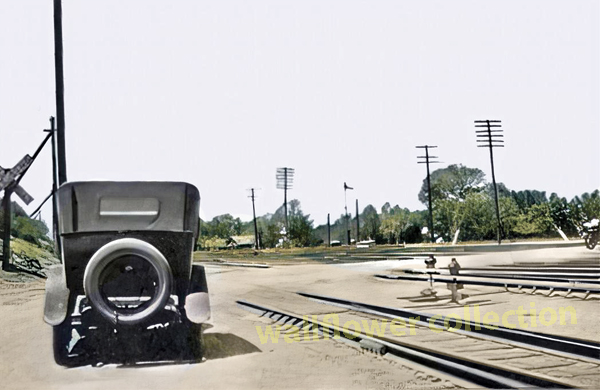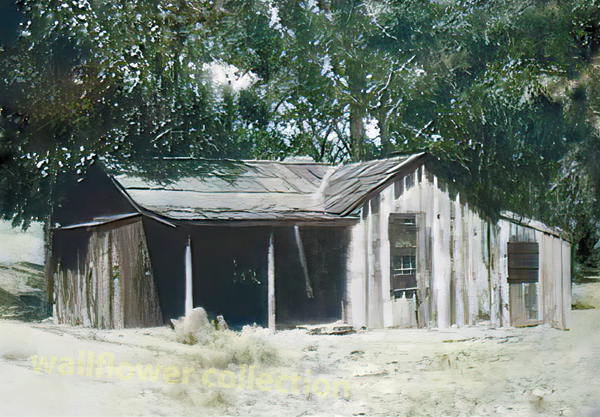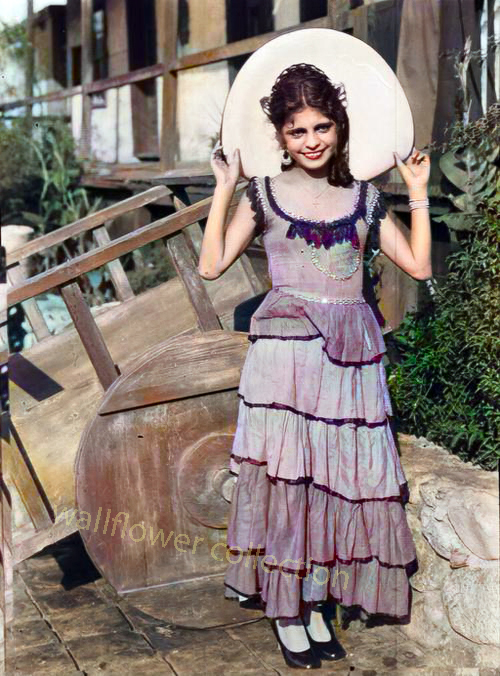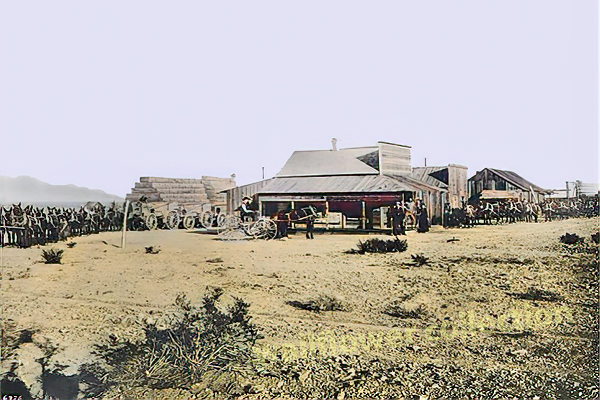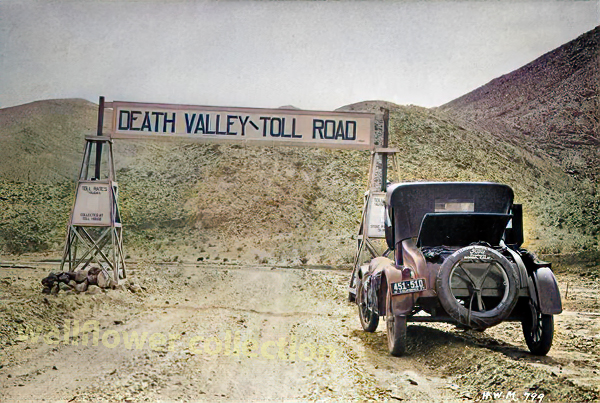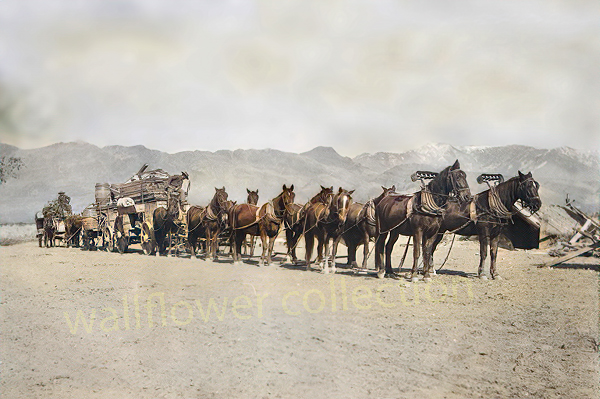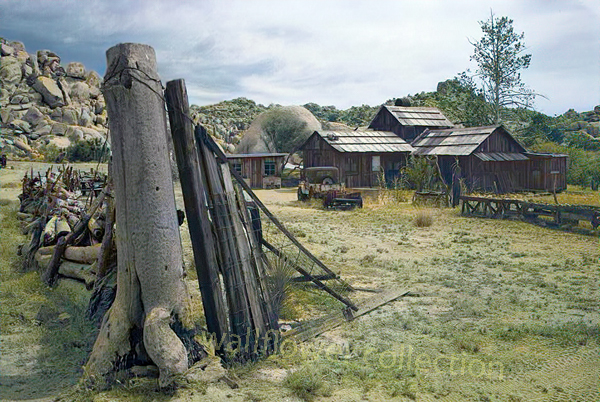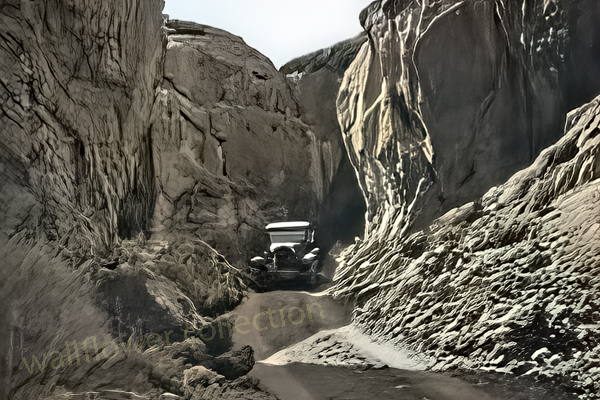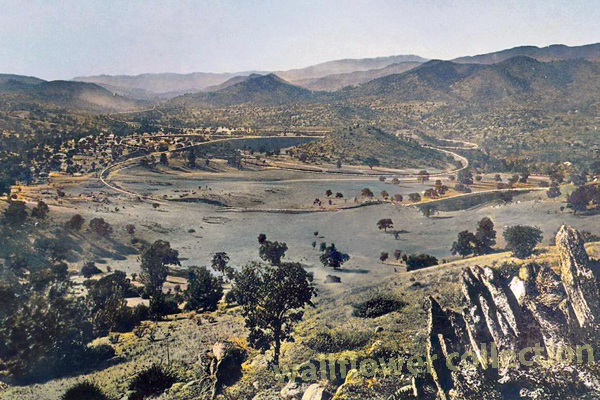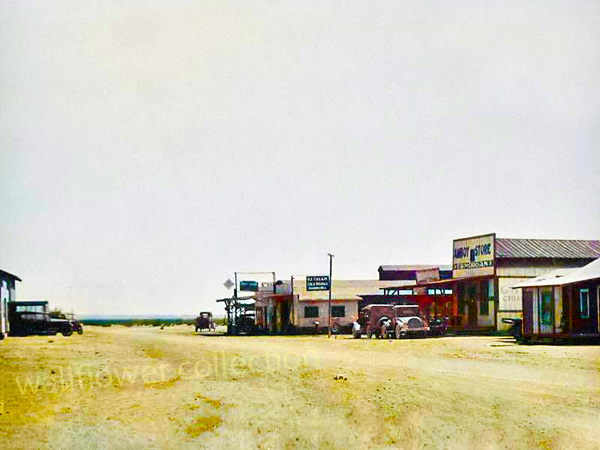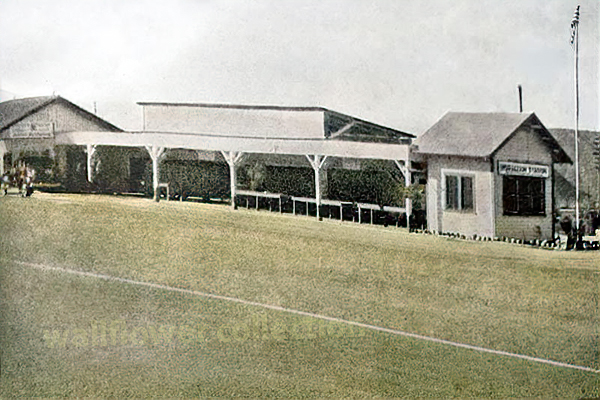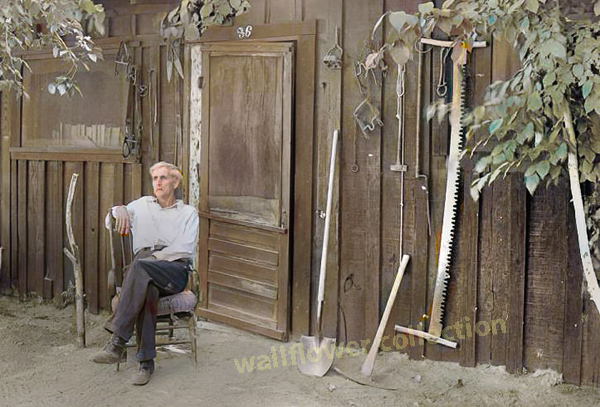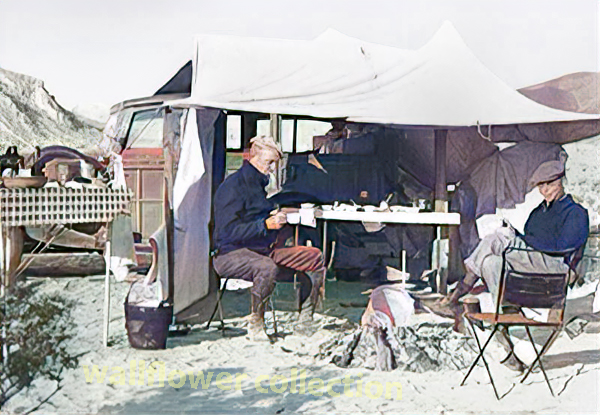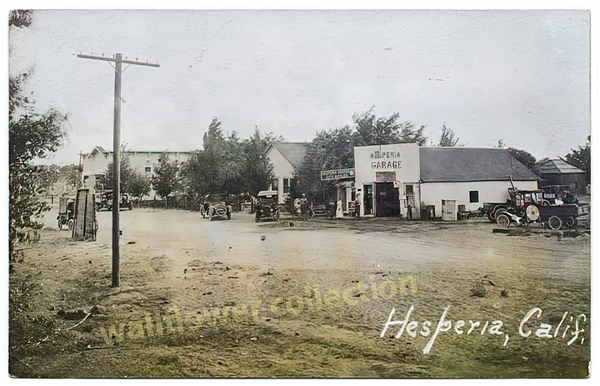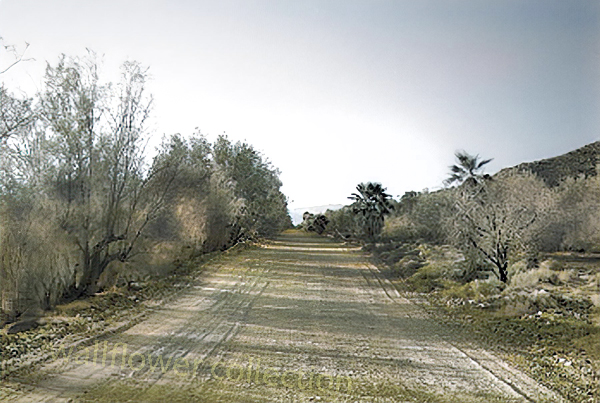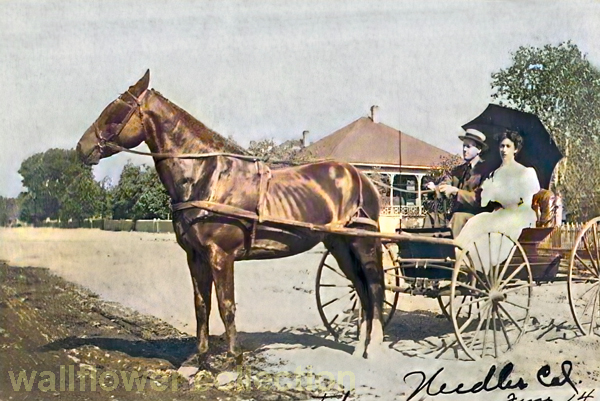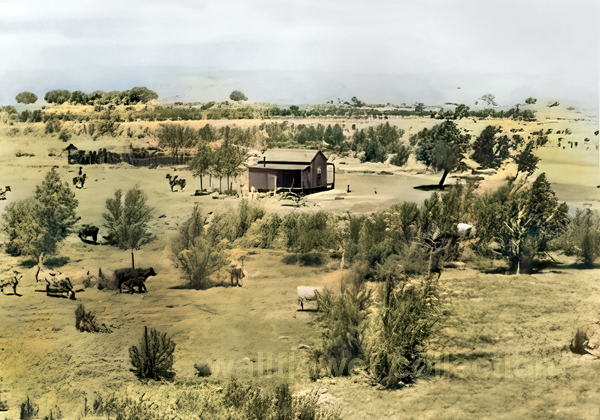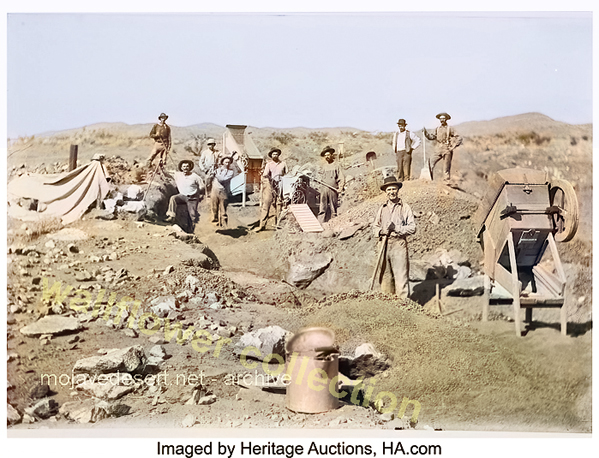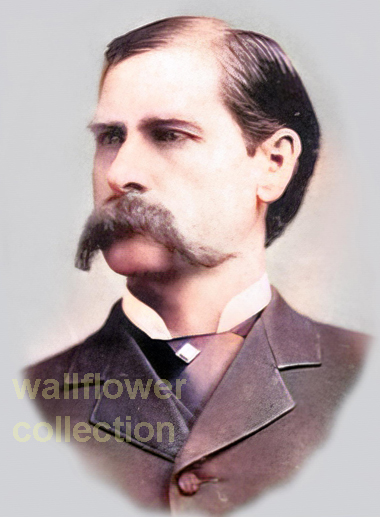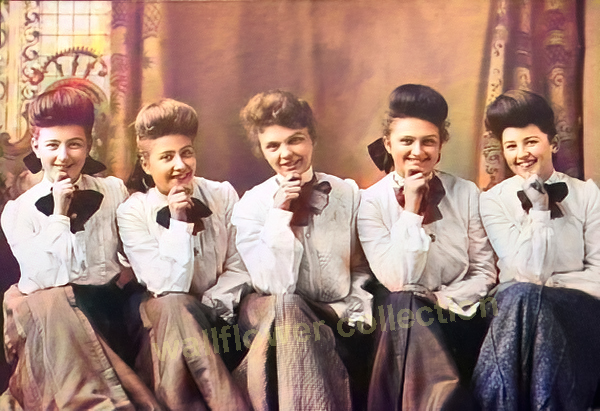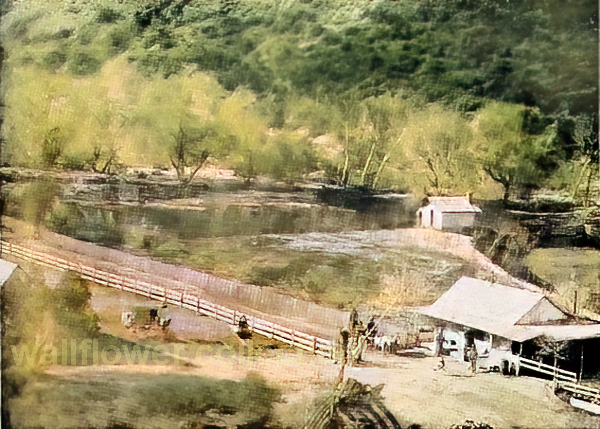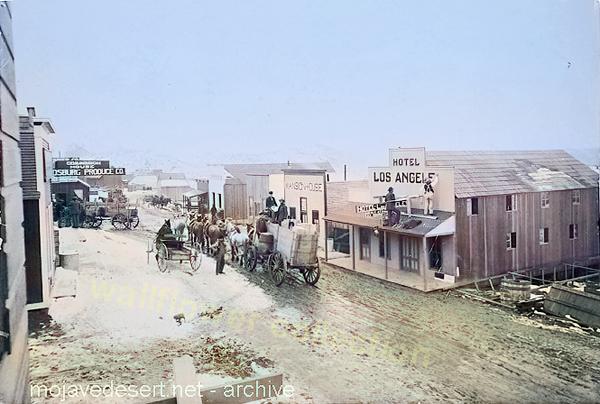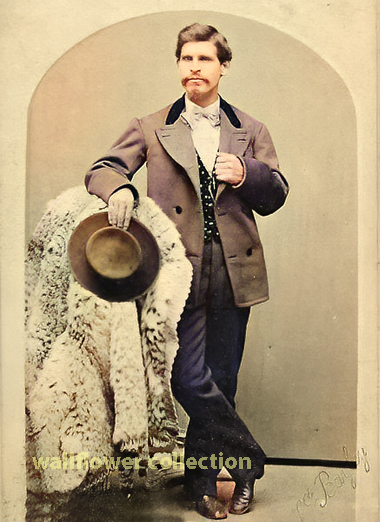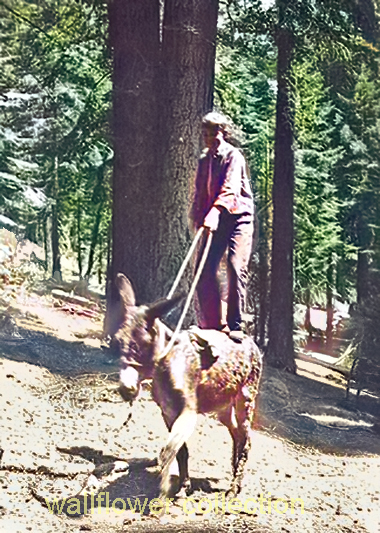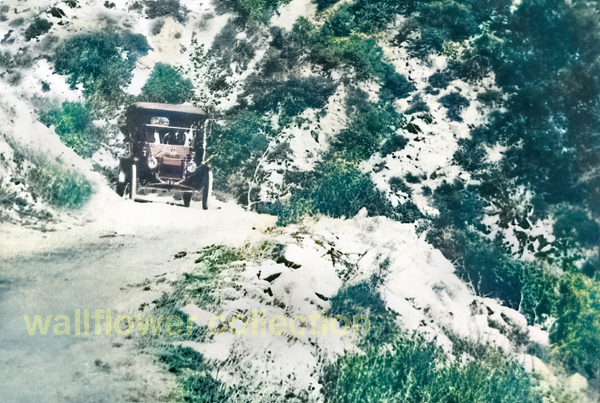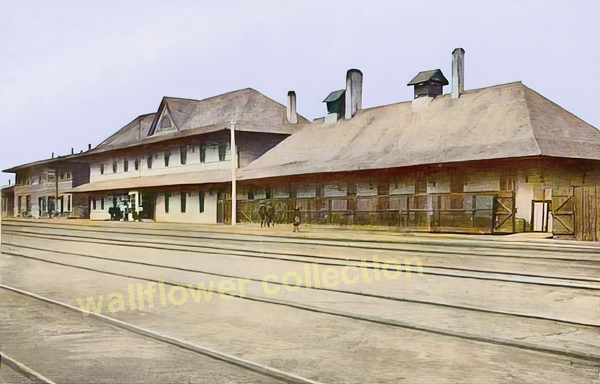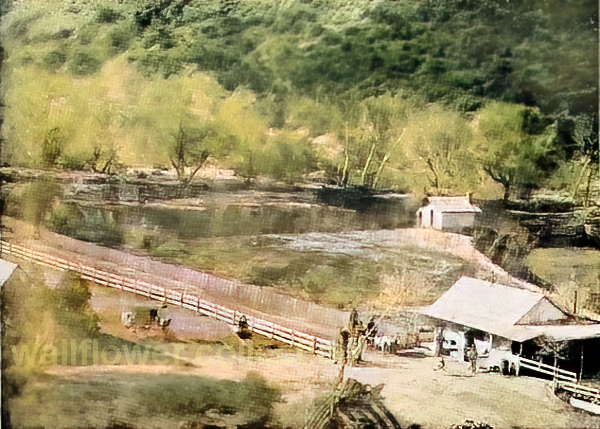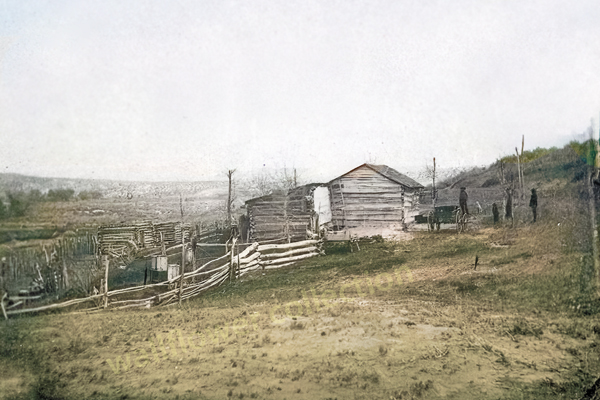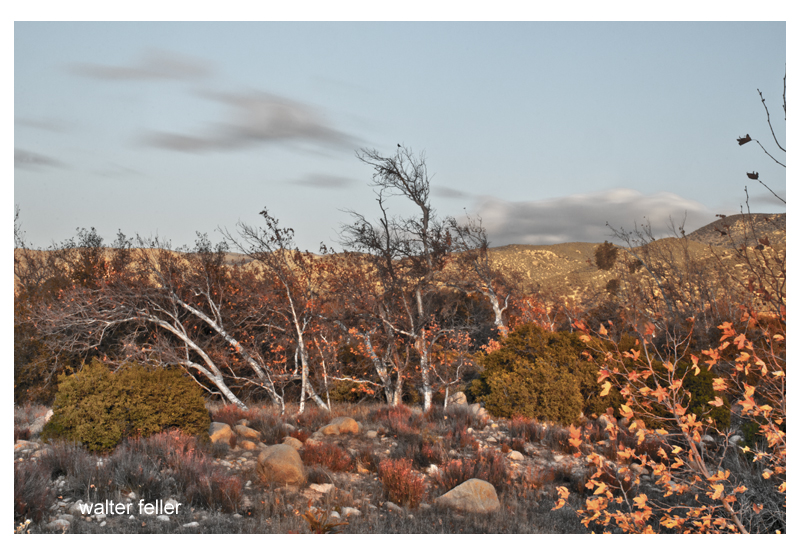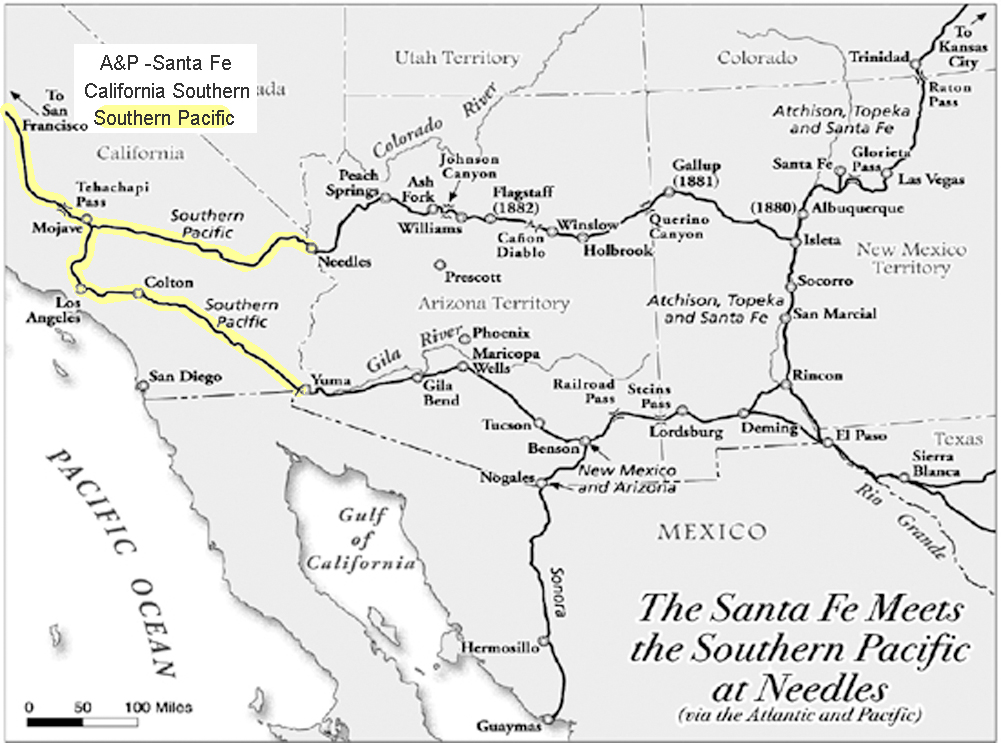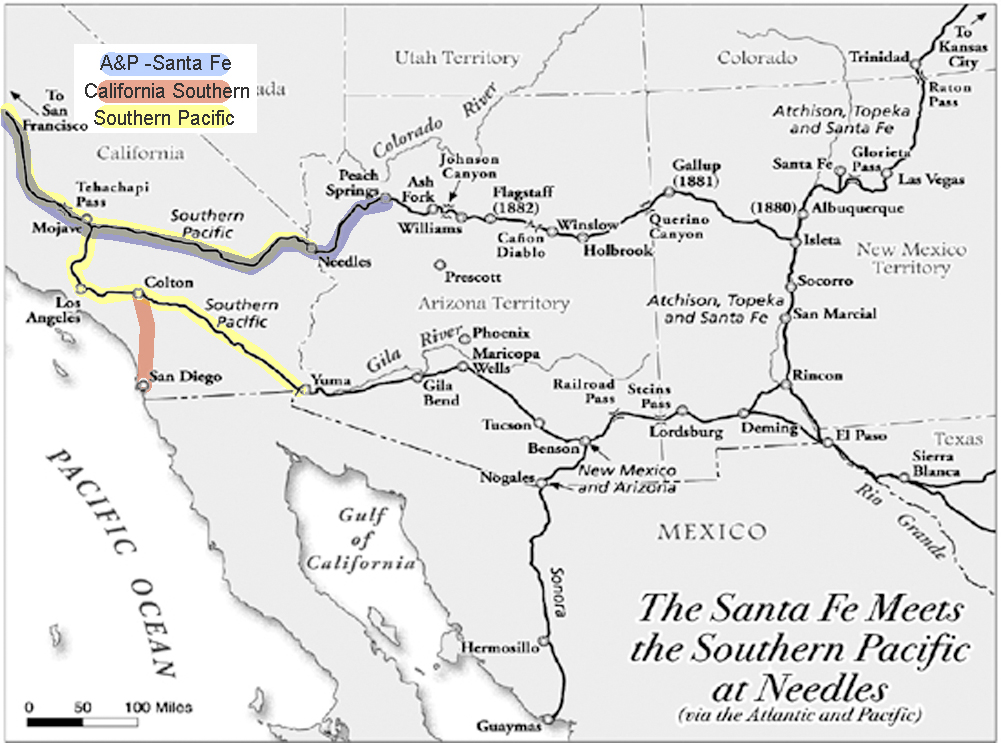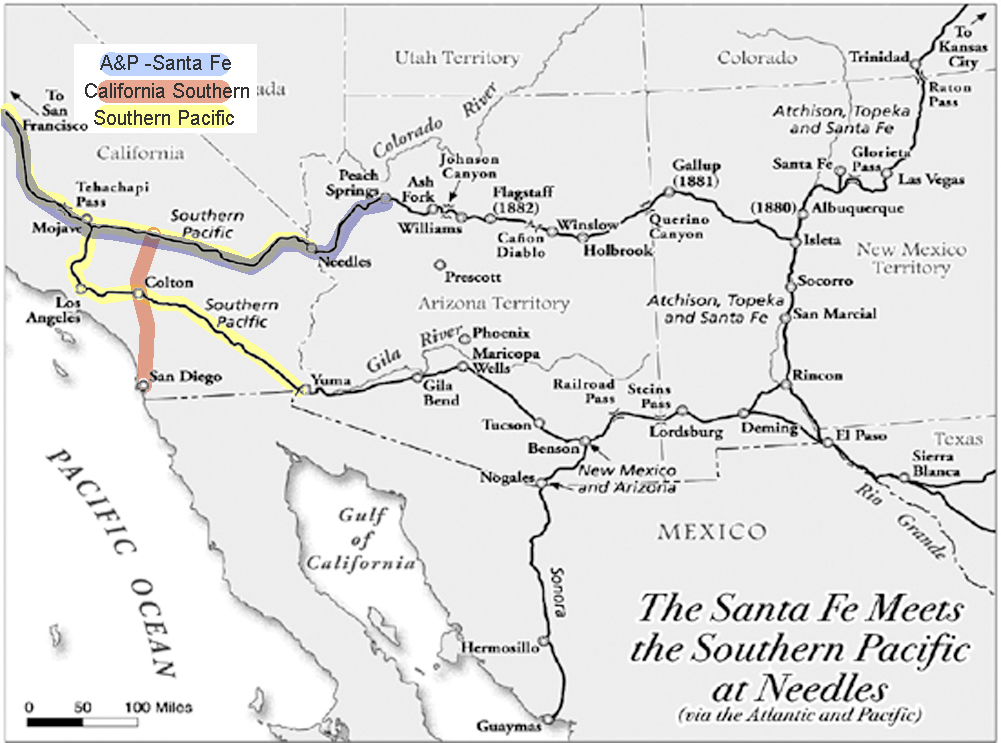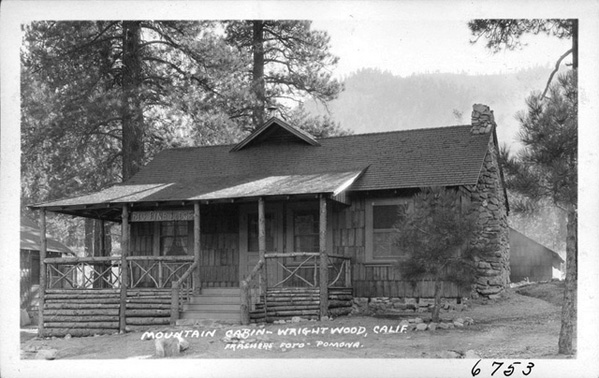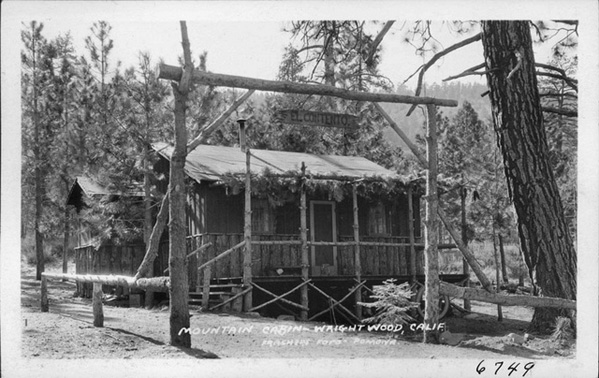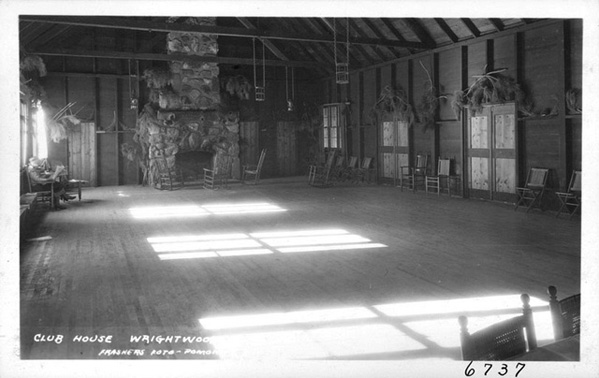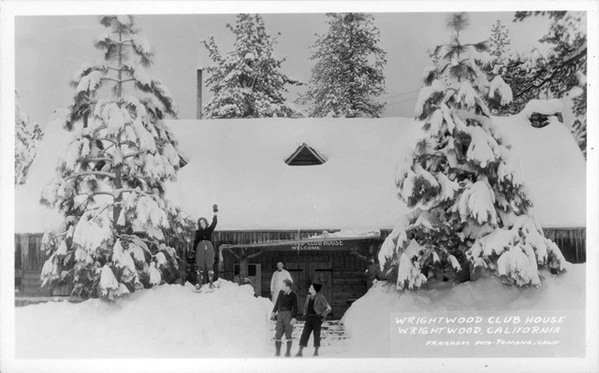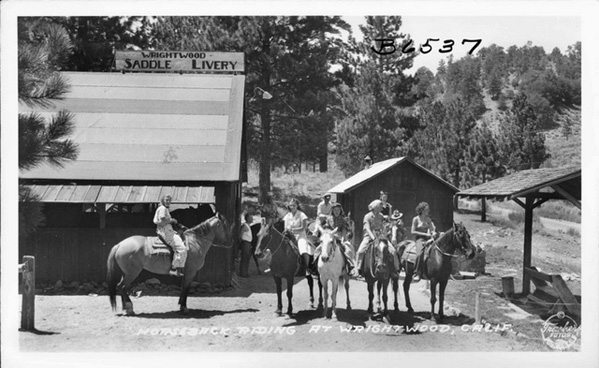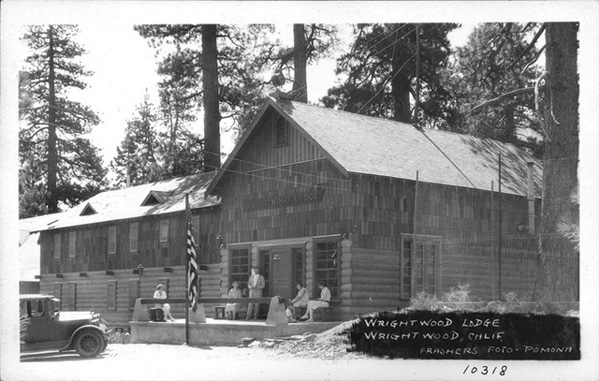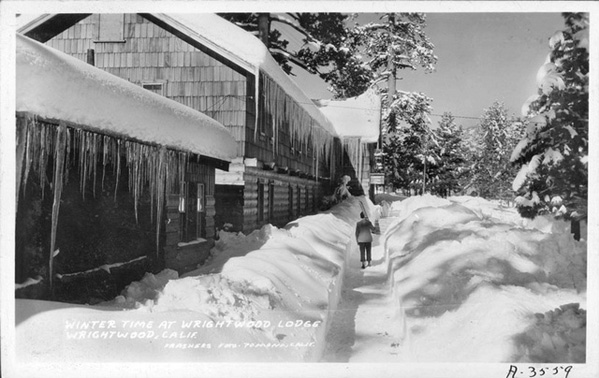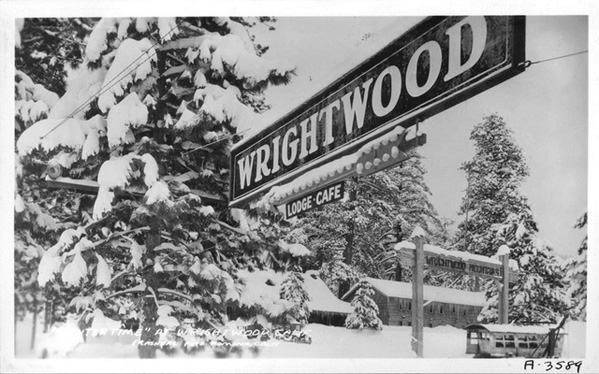The March 1915 issue of Motor magazine contained an article by A. L. Westgard on “Motor Routes to the California Expositions.” The following is an excerpt from that article:
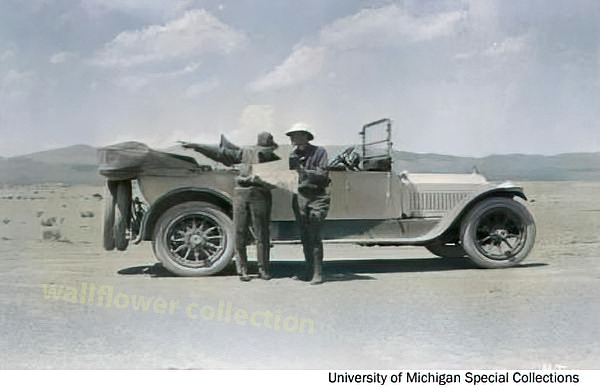
Owing to the recent improvement of the transcontinental routes, it is no longer necessary to load one’s car down with all sorts of paraphernalia to combat the many difficulties which formerly were strewed along the path, nor is it, in this day of dependable motor cars, necessary to carry a multiplicity of parts. Still, it is well to outfit with reasonably limited equipment to provide against mud, possible breakdowns, and climatic changes.
To begin with, limit your personal outfit to a minimum, allowing only a suitcase to each person, and ship your trunk. Use khaki or old loose clothing. Some wraps and a tarpaulin to protect you against cool nights and provide cover in the case of being compelled to sleep outdoors are essential. Amber glasses, not too dark, will protect your eyes against the glare of the desert. You will, of course, want a camera, but remember that the high lights of the far west will require a smaller shutter opening and shorter exposure than the eastern atmosphere.
Carry sixty feet of 5/8-inch Manila rope, a pointed spade, a small ax with the blade protected by a leather sheet, a camp lantern, a collapsible canvas bucket with spout, and a duffle bag for the extra clothing and wraps. Start out with new tires all around, of the same size if possible, and two extra tires also, with four extra inner tubes. Select a tire with tough fabric; this is economical and will save annoyance. Use only the best grade of lubricating oil and carry a couple of one-gallon cans on running-board as extra supply, because you may not always be able to get the good oil you ought to use.
And, mark this well, carry two three-gallon canvas desert water bags, then see that they are filled each morning. Give your car a careful inspection each day for loose bolts or nuts and watch grease cups and oil cups. Carry two sets of chains and two jacks, and add to your usual tool equipment a coil of soft iron wire, a spool of copper wire, and some extra spark plugs.
West of the Missouri carry a small commissary of provisions, consisting of canned meat, sardines, crackers, fresh fruit or canned pineapples, and some milk chocolate for lunches. The lack of humidity in the desert sections, combined with the prevalence of hard water west of the Missouri River is liable to cause the hair to become dry and to cause chaps and blisters on the face and hands as well as cause the fingernails to become brittle and easily broken. To prevent this, carry a jar of outing cream and a good hair cleanser. Use them every night.
-.-


